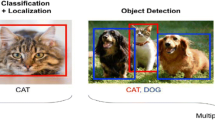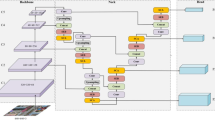Abstract
Visual surveillance systems have recently captured the attention of the research community. Most of the proposed surveillance systems deal with stationary cameras. Nevertheless, these systems may reflect minor applicability in anomaly detection when multiple cameras are required. Lately, under technological progress in electronic and avionics systems, Unmanned Aerial Vehicles (UAVs) are increasingly used in a wide variety of urban missions. Especially, in the surveillance context, UAVs can be used as mobile cameras to overcome weaknesses of stationary cameras. One of the principal advantages that makes UAVs attractive is their ability to provide a new aerial perspective. Despite their numerous advantages, there are many difficulties associated with automatic anomalies detection by an UAV, as there is a lack in the proposed contributions describing anomaly detection in videos recorded by a drone. In this paper, we propose new anomaly detection techniques for assisting UAV based surveillance mission where videos are acquired by a mobile camera. To extract robust features from UAV videos, three different features extraction methods were used, namely a pretrained Convolutional Neural Network (CNN) and two popular handcrafted methods (Histogram of Oriented Gradient (HOG) and HOG3D). One Class Support Vector Machine (OCSVM) has been then applied for the unsupervised classification. Extensive experiments carried on a dataset containing videos taken by an UAV monitoring a car parking, prove the efficiency of the proposed techniques. Specifically, the quantitative results obtained using the challenging Area Under Curve (AUC) evaluation metric show that, despite the variation among them, the proposed methods achieve good results in comparison to the existing technique with an AUC = 0.78 at worst and an AUC = 0.93 at best.








Similar content being viewed by others
References
Ballabio D (2015) A MATLAB toolbox for Principal Component Analysis and unsupervised exploration of data structure. Chemometr Intell Lab Syst 149:1–9
Bera A, Kim S, Manocha D (2016) Realtime anomaly detection using trajectory-level crowd behavior learning. In: Proceedings of the IEEE Conference on Computer Vision and Pattern Recognition Workshops, pp 50–57
Bonetto M, Korshunov P, Ramponi G, et al. (2015) Privacy in mini-drone based video surveillance. In: 2015 11th IEEE International Conference and Workshops on Automatic Face and Gesture Recognition (FG). IEEE, pp 1–6
Bouindour S, Hu R, Snoussi H (2019) Enhanced Convolutional Neural Network for Abnormal Event Detection in Video Streams. In: 2019 IEEE Second International Conference on Artificial Intelligence and Knowledge Engineering (AIKE). IEEE, pp 172–178
Bradley AP (1997) The use of the area under the ROC curve in the evaluation of machine learning algorithms. Pattern recognition 30(7):1145–1159
Cai Y, Ma L, Liu G (2019) A Night-time Anomaly Detection System of Hog Activities Based on Passive Infrared Detector. Appl Eng Agric 35 (4):481–493
Carreño A, Inza I, Lozano JA (2020) Analyzing rare event, anomaly, novelty and outlier detection terms under the supervised classification framework. Artif Intell Rev 53:3575–3594. https://doi.org/10.1007/s10462-019-09771-y
Chalapathy R, Chawla S (2019) Deep learning for anomaly detection: A survey. arXiv:1901.03407
Chan Y-T, Wang S-J, Tsai C-H (2017) Extracting foreground ensemble features to detect abnormal crowd behavior in intelligent video-surveillance systems. Journal of Electronic Imaging 26(5):051402
Chandola V, Banerjee A, Kumar V (2009) Anomaly detection: a survey. ACM computing surveys (CSUR) 41(3):1–58
Chang C-C, Lin C-J (2011) LIBSVM: A library for support vector machines. ACM transactions on intelligent systems and technology (TIST) 2(3):1–27
Chicco D (2017) Ten quick tips for machine learning in computational biology. BioData mining 10(1):35
Chriki A, Touati H, Snoussi H, Kamoun F (2019) FANET: Communication, mobility models and security issues. Comput Netw 163:106877
Chriki A, Touati H, Snoussi H, Kamoun F (2019) UAV-GCS Centralized Data-Oriented Communication Architecture for Crowd Surveillance Applications. In: 2019 15th International Wireless Communications & Mobile Computing Conference (IWCMC), IEEE, pp 2064–2069
Chriki A, Touati H, Snoussi H, Kamoun F (2019) Centralized Cognitive Radio Based Frequency Allocation for UAVs Communication. In: 2019 15th International Wireless Communications & Mobile Computing Conference (IWCMC), IEEE, pp 1674–1679
Cinelli LP, Thomaz LA, Da Silva AF, et al. (2017) Foreground segmentation for anomaly detection in surveillance videos using deep residual networks. Proceedings of the XXXV simpósio Brasileiro De telecomunicações E Processamento De Sinais, Sao Pedro, Brazil, pp 3–6
Cortes C, Vapnik V (1995) Support-vector networks. Machine learning 20(3):273–297
Dalal N, Triggs B (2005) Histograms of oriented gradients for human detection. In: 2005 IEEE computer society conference on computer vision and pattern recognition (CVPR’05). IEEE, pp 886–893
Diego F, Evangelidis G, Serrat J, Evangelidis G, Serrat J (2012) “Night-time outdoor surveillance with mobile cameras”
Diego F, Ponsa D, Serrat J, et al. (2010) Video alignment for change detection. IEEE Trans Image Process 20(7):1858–1869
ExtractHOGFeatures (2020) MathWorks. https://ch.mathworks.com/help/vision/ref/extracthogfeatures.html. Accessed 25 January
Fahn C-S, Ling J, Yeh M-Y, et al. (2019) Abnormal Maritime Activity Detection in Satellite Image Sequences Using Trajectory Features. International Journal of Future Computer and Communication, 8(1)
Farooq MU, Khan NA, Ali MS (2017) Unsupervised video surveillance for anomaly detection of street traffic International Journal of Advanced Computer Science and Applications (IJACSA)
Golda T, Murzyn N, Qu C, et al. (2019) What goes around comes around: Cycle-Consistency-based Short-Term Motion Prediction for Anomaly Detection using Generative Adversarial Networks. In: 2019 16th IEEE International Conference on Advanced Video and Signal Based Surveillance (AVSS). IEEE, pp 1–8
Googlenet (2020) MathWorks. https://ch.mathworks.com/help/deeplearning/ref/googlenet.html. Accessed 15 January
Gordon G, Tibshirani R (2012) Karush-kuhn-tucker conditions. Optimization 10(725/36):725
Haering N, Venetianer P, Lipton A (2008) The evolution of video surveillance: an overview. Mach Vis Appl 19(5-6):279–290
Henrio J, Nakashima T (2018) Anomaly Detection in Videos Recorded by Drones in a Surveillance Context. In: 2018 IEEE International Conference on Systems, Man, and Cybernetics (SMC). IEEE, 2503–2508
Kawachi Y, Koizumi Y, Murata S, et al. (2019) A two-class hyper-spherical autoencoder for supervised anomaly detection. In: ICASSP 2019-2019 IEEE International Conference on Acoustics, Speech and Signal Processing (ICASSP). IEEE, pp 3047–3051
Kiran BR, Thomas DM, Parakkal R (2018) An overview of deep learning based methods for unsupervised and semi-supervised anomaly detection in videos. Journal of Imaging 4(2):36
Klaser A, Marszałek M, Schmid C (2008) A spatio-temporal descriptor based on 3d-gradients
Lowe DG (2004) Distinctive image features from scale-invariant keypoints. International journal of computer vision 60(2):91–110
Lu X, Ma C, Ni B, et al. (2018) Deep regression tracking with shrinkage loss. In: Proceedings of the European conference on computer vision (ECCV), pp 353–369
Lu X, Ma C, Ni B, et al. (2019) Adaptive region proposal with channel regularization for robust object tracking IEEE Transactions on Circuits and Systems for Video Technology
Medel JR, Savakis A (2016) Anomaly detection in video using predictive convolutional long short-term memory networks. arXiv:1612.00390
Mishra SR, Mishra TK, Sarkar A, et al. (2020) Detection of anomalies in human action using optical flow and gradient tensor. in : smart intelligent computing and applications. Springer, Singapore, pp 561–570
Motlagh NH, Bagaa M, Taleb T (2017) UAV Based IoT platform: A crowd surveillance use case. IEEE Commun Mag 55(2):128–134
Nawaratne R, Alahakoon D, De Silva D, et al. (2019) Spatiotemporal anomaly detection using deep learning for Real-Time video surveillance. IEEE Transactions on Industrial Informatics 16(1):393–402
Olatunji IE, Cheng C-H (2019) Video analytics for visual surveillance and applications: an overview and survey. In: Machine learning paradigms, Springer, Cham, pp 475–515
Patil N, Biswas PK (2016) Global abnormal events detection in surveillance video—A hierarchical approach. In: 2016 Sixth International Symposium on Embedded Computing and System Design (ISED), IEEE, pp 217–222
Pearson K L III (1901) On lines and planes of closest fit to systems of points in space. The London Edinburgh, and Dublin Philosophical Magazine and Journal of Science 2(11):559–572
Ribeiro M, Lazzaretti AE, Lopes HS (2018) A study of deep convolutional auto-encoders for anomaly detection in videos. Pattern Recogn Lett 105:13–22
Saini R, Ahmed A, Dogra DP, et al. (2017) Surveillance scene segmentation based on trajectory classification using supervised learning. In: Proceedings of International Conference on Computer Vision and Image Processing, Springer, Singapore, pp 261–271
Schölkopf B, Williamson RC, Smola AJ, et al. (2000) Support vector method for novelty detection. In: Advances in neural information processing systems, pp 582–588
Stone M (1974) Cross-validatory choice and assessment of statistical predictions. Journal of the Royal Statistical Society: Series B (Methodological) 36 (2):111–133
Szegedy C, Liu W, Jia Y, et al. (2015) Going deeper with convolutions. In: Proceedings of the IEEE conference on computer vision and pattern recognition, pp 1–9
Thomaz LA, Jardim E, Da Silva AF, et al. (2017) Anomaly detection in moving-camera video sequences using principal subspace analysis. IEEE Transactions on Circuits and Systems I: Regular Papers 65(3):1003–1015
Wang T, Qiao M, Zhu A, et al. (2018) Abnormal event detection via covariance matrix for optical flow-based feature. Multimedia Tools and Applications 77(13):17375–17395
Wang T, Snoussi H (2014) Detection of abnormal visual events via global optical flow orientation histogram. IEEE Transactions on Information Forensics and Security 9(6):988–998
Wang Y, Yoshihashi R, Kawakami R, et al. (2019) Unsupervised anomaly detection with compact deep features for wind turbine blade images taken by a drone. IPSJ Transactions on Computer Vision and Applications 11(1):1–7
Wang S, Zhu E, Yin J, et al. (2016) Anomaly detection in crowded scenes by SL-HOF descriptor and foreground classification. In: 2016 23rd International Conference on Pattern Recognition (ICPR), IEEE, pp 3398–3403
Wei JY, Zhao JF, Zhao YY, et al. (2018) Unsupervised anomaly detection for traffic surveillance based on background modeling. In: Proceedings of the IEEE Conference on Computer Vision and Pattern Recognition Workshops, pp 129–136
Wittek P (2014) Unsupervised Learning. In: Quantum machine learning: what quantum computing means to data mining. Academic Press
Xu D, Yan Y, Ricci E, et al. (2017) Detecting anomalous events in videos by learning deep representations of appearance and motion. Comput Vis Image Underst 156:117–127
Yan W, Yu L (2019) On accurate and reliable anomaly detection for gas turbine combustors: A deep learning approach. arXiv:1908.09238
Zhai X, Liu K, Nash W, et al. (2020) Smart Autopilot Drone System for Surface Surveillance and Anomaly Detection via Customizable Deep Neural Network. In: International Petroleum Technology Conference. International Petroleum Technology Conference
Zhang A, Lipton ZC, Li M, et al. (2019) Dive into Deep Learning. Unpublished draft Retrieved 3:319
Zhou S, Shen W, Zeng D, et al. (2016) Spatial–temporal convolutional neural networks for anomaly detection and localization in crowded scenes. Signal Process Image Commun 47:358–368
Author information
Authors and Affiliations
Corresponding author
Additional information
Publisher’s note
Springer Nature remains neutral with regard to jurisdictional claims in published maps and institutional affiliations.
Rights and permissions
About this article
Cite this article
Chriki, A., Touati, H., Snoussi, H. et al. Deep learning and handcrafted features for one-class anomaly detection in UAV video. Multimed Tools Appl 80, 2599–2620 (2021). https://doi.org/10.1007/s11042-020-09774-w
Received:
Revised:
Accepted:
Published:
Issue Date:
DOI: https://doi.org/10.1007/s11042-020-09774-w




